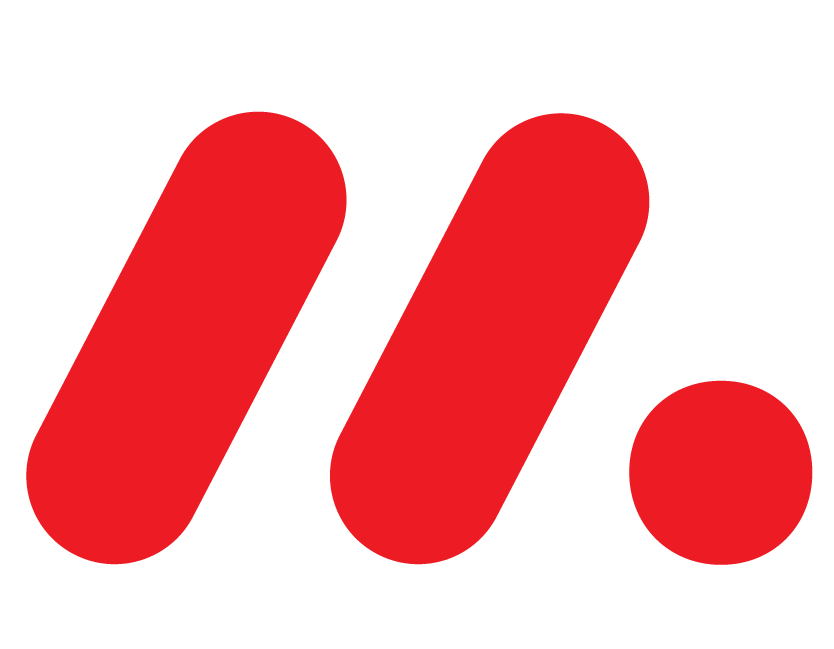Individual Health Insurance Plans in Kenya
- Introduction
- The Basic Concepts in Individual Health Insurance Plans
- Types of Individual Health Insurance Plans in Kenya
- Comparative table of key coverage features across HMO, PPO, and POS plans in Kenya
- Key aspects of an individual health insurance plan in Kenya
- Factors to consider when choosing an individual health insurance plan in Kenya
- The Role of Insurance Regulatory Authority in the insurance industry in Kenya
- Additional Considerations
- Enrollment Process for Individual Health Insurance Plans in Kenya
- Conclusion
- Frequently Asked Questions
- Read Also
Introduction
Health insurance is important in Kenya. It lets people get medical care without money worries. Over 40% of Kenyans live in poverty, making medical bills challenging. Without insurance, many must pick between medicine and food. This coverage prevents sudden financial burdens.
Often, medical costs are high. Many can’t pay for good treatment alone. Health insurance reduces the stress of big bills. It’s especially useful in emergencies, which need quick and costly care. By spreading costs, health insurance makes healthcare accessible and affordable.

Health insurance offers several benefits. Firstly, it shields your finances by covering hospital and surgery costs. This prevents you from using savings or going into debt when sick. Additionally, it allows you to visit many doctors and hospitals. This ensures you receive good care. Most plans also include wellness programs and preventive services. These encourage regular check-ups.
The Basic Concepts in Individual Health Insurance Plans
1. Buying a plan
Choose the right health insurance for you. It should fit your needs and budget. Then, pay a premium to the company. You can pay monthly or yearly to stay protected.
2. Coverage
The plan covers various medical services. This involves doctor and hospital visits, surgeries, medicines, and preventive care. The latter checks and vaccinations.
3. Using the insurance
Choose a doctor or hospital in your network for medical care. Use your insurance card to cover promised costs.
4. Excess Fees and Deductible
Excess Fees are fixed amounts for specific services. You must pay them at the time of service.
- Deductibles are the total amount you pay before insurance kicks in. This rule applies to many services.
- They impact your out-of-pocket costs. Knowing them helps you plan for medical expenses. It also guides you in choosing the right plan for your health and finances.
How They Work in the Kenyan Context
- Choice of Plans: Kenya has various insurance companies. They offer different plans. You can choose one based on your health needs. You can also consider your financial situation.
- Hospitals and Doctors: In Kenya, health insurance plans cover hospitals. They also cover doctors. They cover both public and private ones. This expands care options.
- Claims Process: In Kenya, claiming insurance is simple. After treatment, hospitals or clinics manage the paperwork with the insurance company. So, you can focus on healing, not bills.
- Government Support: The Kenyan government backs health insurance. It uses programs like the National Health Insurance Fund. Making healthcare more affordable and accessible.
Types of Individual Health Insurance Plans in Kenya
1. Health Maintenance Organization
Features
- You must choose a main doctor. They will coordinate your care.
- You need referrals from your doctor. They are required to see specialists.
Advantages
Care is managed by a primary doctor, usually with lower costs.
Disadvantages
You must stick to in-network providers. This limits your choice of healthcare providers.
2. Preferred Provider Organization
Features
- You can see any doctor or specialist without referrals.
- Costs are lower if you use in-network providers.
Advantages
- Greater choice of healthcare providers.
- No need for specialist referrals.
Disadvantages
- Higher premiums and out-of-pocket costs.
- More paperwork, especially if using out-of-network providers.
3. Point-of-Service
Features
- Required to select one and obtain referrals.
- Available but at a higher cost.
Advantages
- Balance of coordinated care and flexibility.
- Access to out-of-network providers.
Disadvantages
- More paperwork and higher costs for out-of-network services.
- Requires referrals for specialist care.
4. Comprehensive Health Insurance
Features
- hospital and outpatient care, maternal services, chronic disease management, and preventive care.
Advantages
- Extensive coverage for a wide range of services.
- Access to numerous healthcare services and providers.
Disadvantages
- High premiums.
- Possible additional out-of-pocket expenses.
Features
- Mandatory for formal sector employees; optional for others.
- Covers care at accredited public and private hospitals.
Advantages
- Affordable coverage.
- Access to both public and private hospitals.
Disadvantages
- Coverage not as extensive as private insurance.
- Quality of care can vary between facilities.
Comparative table of key coverage features across HMO, PPO, and POS plans in Kenya
| Feature Comparison | Health Maintenance Organization | Preferred Provider Organization | Point-of-Service |
| Primary Care Doctor | Required; PCP coordinates care | Optional; direct access to specialists | Required; PCP coordinates care |
| Referrals | Generally required for specialists | Not required for specialists | Required for specialists outside network |
| Cost | Lower premiums; predictable copays | Higher premiums; lower out-of-pocket costs | Moderate premiums; varying copays |
| Provider Network | Limited to network providers | Larger network; out-of-network coverage | Combination of HMO & PPO networks |
| Coverage Flexibility | Less flexibility outside network | More flexibility in choosing providers | Flexible with in-network primary care |
| Claim Process | Simple; usually handled by HMO | More complex; may involve filing own claims | Similar to HMO; handled by POS |
| Preventive Care | Often fully covered | Covered, but may require copays | Covered, usually through PCP |
| Cost Control | Emphasis on preventive care and managed costs | Managed through network negotiations | Balanced approach between HMO & PPO |
Key aspects of an individual health insurance plan in Kenya
1. Deductibles
Deductiblesare the total amount you pay before insurance kicks in. This rule applies to many services.
2. Excess Fees (Copays)
Excess Fees are fixed amounts for specific services. You must pay them at the time of service.
3. Coinsurance
After meeting your deductible, you pay coinsurance. This is a percentage of medical costs. Then, your insurance covers the rest, 80%. Plans with higher coinsurance offer lower monthly premiums. Knowing your coinsurance helps estimate costs for significant medical bills.
4. Network Coverage
Insurance plans cut costs at in-network providers, like doctors and hospitals. Out-of-pocket expenses are lower there. These providers accept lower rates. However, going out of network can raise costs. Your insurance might not cover much or any costs in these cases.
Factors to consider when choosing an individual health insurance plan in Kenya
- Consider premiums, deductibles, and copays.
- Review your health and medical needs. Does the plan cover checkups, medications, and specialists?
- Check if your favorite hospitals and doctors are in the plan. This step reduces costs and makes care easier to access.
- Check the plan for your essential drugs. Also, review the rules for covered drugs.
- Know what’s excluded. The plan doesn’t cover certain surgeries or cosmetic procedures.
- Filing a claim? Learn how to do it and find out when you’ll get reimbursed for medical expenses.
- Check the insurer’s customer reviews. Do they respond to your questions?
- Some plans offer wellness programs or telemedicine. Consider if you need them.
- Read the policy terms. Understand renewal rules and waiting periods. These rules apply to using benefits.
1. Regulation
The IRA ensures insurance providers follow the Insurance Act (CAP 487). It also sets standards for being fair, clear, and reliable.
2. Supervision
The IRA watches over insurance companies. It reviews their finances and ability to serve policyholders. Also, it approves products and ensures they follow capital rules.
3. Consumer Protection
The IRA protects policyholders and beneficiaries. It addresses complaints and disputes, ensuring fast claims. Also, it educates on insurance rights and duties.
4. Development of the Industry
The IRA boosts Kenya’s insurance sector by raising coverage and standards. It also aims to enhance trust in insurance products.
5. Combatting Fraud
The IRA operates an Insurance Fraud Investigation Unit. Its goal is to cut fraud in the insurance industry. This reduces costs for consumers and protects the industry’s reputation.
Additional Considerations
Pre-existing conditions in Kenya
Diabetics and those with hypertension often pay more. For them, costs rise because of heart disease or stroke risks. Asthma patients get limited medication and hospital coverage. Cancer patients face high bills or restricted coverage. Most Kenyans can’t get the insurance they need, leading to financial and health issues.
Importance of Reviewing Exclusions and Limitations
- Helps in planning for medical expenses.
- Awareness of waiting periods for coverage of pre-existing conditions . Allows for better financial planning and management of health needs during that time.
- Understanding potential out-of-pocket expenses can prevent unexpected financial burdens.
- Ensures access to necessary care without excessive costs.
Enrollment Process for Individual Health Insurance Plans in Kenya
1. Research and Compare Plans
Start by researching different health insurance providers in Kenya. Look at their coverage options, benefits, premiums, and any exclusions.
Compare plans to find one that suits your healthcare needs and budget.
2. Choose a Plan
Once you’ve picked a provider and a plan, contact the insurance company. Or, visit their website to get details about the plan.
Make sure the plan covers the services you need. These include outpatient care, hospital stays, and maternity benefits.
3. Fill Out an Application
Fill out the insurance company’s application form. It will ask for personal details. These include your full name, date of birth, address, job, and contact information.
4. Provide Necessary Documentation
You may need to provide supporting documents. These could include a copy of your ID or passport, proof of income, and possibly medical history. It all depends on the insurer’s requirements.
5. Medical Examination (if required):
Some insurance plans may need a medical check or a questionnaire. This helps the insurer check your health and set the premium.
6. Payment of Premium
After approval, pay the first premium. You can use bank transfer, mobile money, or pay directly at the insurer’s office.
7. Receive Your Policy Document
Once your payment is confirmed, the insurance company will send you a policy document. It details your coverage, including benefits, limits, and exclusions.
8. Coverage Activation
Your coverage starts from the date in your policy document. This date is after the first premium payment and the application approval.
9. Review Your Coverage
Take time to review the details of your coverage once you receive your policy document. Ensure that all the information is correct and matches what you agreed upon.
10. Renewal and Maintenance
Pay attention to renewal dates and ensure timely payments to maintain continuous coverage. Keep your insurance documents in a safe place for future reference.
Conclusion
In Kenya, choose a health insurance plan that fits your needs and budget. Check costs, coverage, and provider networks. Then, compare plans. Look for one that fully covers you at a low price. Health insurance offers peace of mind and financial security. It shields you from high medical costs and ensures quick access to good healthcare. In Kenya, individual plans come in three types: HMOs, PPOs, and POS plans. Each meets specific healthcare needs. Investing in health insurance keeps you healthy and financially secure. It ensures you can afford necessary medical care.

